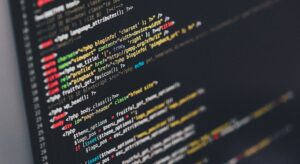The Economies of Incarceration
The emerging digital economy offers boons and benefits to anyone with the resources and capacity to see and embrace its opportunities. Its technologically enhanced expansion eliminates borders, facilitating access to larger markets and vast numbers of new consumers. Its future promise is almost unlimited as more options, iterations, and assets amplify those that are already driving unprecedented growth.
Not all people can access these options, however. Barriers—both incidental and intentional—often prevent individuals from attaining their fair share of existing resources, leaving them in the uncomfortable situation of having to rely on public services to meet their basic needs. The cost to society of supporting these populations is high, so reducing their numbers and increasing their opportunities for self-sufficiency would provide benefits to both them and their community.
The High Cost of Incarceration
One such population is that of the incarcerated or formerly incarcerated adult. Too often, people who have been involved with the criminal justice system are written off as perpetual ‘bad seeds,’ and few resources are made available to them to assist with their rehabilitation back into society. This negative perspective, unfortunately, perpetuates not just the downward economic path of the individual but also an increasing public burden for their support. It’s time to reverse this sad perspective and offer those who’ve paid their ‘debt to society’ the resources and support they need to become contributing members of it instead.
The reality is that it’s not just the prisoner who experiences jail- or prison time. Their immediate and extended family, as well as the community in which they live, also feel the impact of a corrections-system involvement. And while the national ‘cost of incarceration’ is frequently cited at around $80 billion (the actual annual cost spent by governments to house criminally convicted individuals), that sum does not include the myriad of incidental and ancillary expenditures that follow the imprisonment of a single person. Sorting through that data reveals an expanding, community-based economic burden that dwarfs the total expenditures of state and federal prison systems.
The Institute for Justice Research and Development at Florida State University (IJRD) has done extensive research on the direct and indirect costs of incarceration, and its data suggests that, at least from an economic point of view, it may be time to rethink how America manages its criminal justice system-involved population.
Economic Impacts of Incarceration on the Individual
The most significant impact on the individual (after the loss of freedom, obviously) is the loss of wages and earning capacity as a consequence of imprisonment. Data indicates that the average prison inmate loses over $33,000 per year (2014 dollars) in earnings, money which would otherwise be spent in the community. Multiply this by the number of prison inmates (1,230,100 at the end of 2022) times the average length of a prison stay (2.25 years), and the lost economic contributions to the national community totals over $90 billion annually.
Additionally, each individual prisoner also suffers a life-long reduction in their earning capacity simply because they have a prison record. Totaling up the aggregate amount of lost lifetime earnings incurred by formerly incarcerated persons equals over $230 billion annually.
Economic Impacts of Incarceration on Communities, Families and Children
The communities from which many incarcerated people come also suffer challenges because their typically difficult social circumstances generate criminal behaviors. Despite the assertion that the threat of incarceration deters crime, the data suggests that the act of incarcerating a person actually causes crime rates to increase.
In reports issued over several years, responses to researchers indicate that:
Only one in five formerly incarcerated people experienced a marked deterrent effect post-prison,
while one-third of respondents stated being imprisoned had no deterrent impact at all.
Almost all respondents (92%), however, reported that their experience of prison was like attending a ‘university of criminality’ where they could learn better, more effective ways to commit crimes and avoid subsequent punishments.
In fact, in controlled studies, those justice-involved persons who were sent to prison were much more likely to re-offend within three years after release than those who were assigned probation or other non-incarceration options. Those given probation instead of prison were much less likely to recidivate within that time frame. Called the ‘Criminogenic Effect of Incarceration,’ the research suggests that, at least in some cases, not incarcerating an individual can reduce future crime rates by reducing the number of criminals on the streets.
The incarcerated (or formerly incarcerated) person isn’t the only one impacted by a prison sentence, either. The IJRD report also reveals the negative impacts on their family members, who struggle to make up for the decided gap in their lives due to their family member’s absence. Children whose parents are incarcerated also experience significant hurdles in their development and to their future:
They are five times more likely to go to prison themselves than those children whose parent wasn’t incarcerated. This population alone – incarcerated children of formerly incarcerated parents – costs the system an additional $130 billion annually.
They also often wind up in foster care. An increase in the number of incarcerated women accounted for a 130% rise in foster care cases between 1985 and 2000, which consumed another $5.3 billion of the American budget.
Other research by Washington Corrections Watch uses the term ‘Secondary Incarceration’ to describe the impact of imprisonment on the family of the inmate. This population suffers significantly different effects than the incarcerated person, but suffer they do.
Stress from knowing about the harsh conduct typically meted out by prison staff in a prison setting causes families to suffer, knowing their loved one is suffering, too.
Children who lose access to critically important parental resources are also more likely to suffer from low self-esteem, depression, and other psychological conditions, which limit their development.
These families are also often stigmatized by their friends and neighbors, or even co-workers and employers who learn about the criminal connection.
The financial challenges that arise from having an incarcerated parent are also significant. These families are more likely to not just be evicted from their homes, but they also face a higher risk of becoming homeless as a result of their corrections connection. Providing support for homeless families with incarcerated members costs the country another $2.2 billion each year.
The research seems clear that incarcerating a person doesn’t provide the values it is designed to create: a reduction in crime and a safer community. There is rarely a corresponding effect of ‘deterrence’ that reduces overall crime. Instead, the nation’s current system of incarceration and criminal ‘corrections’ strategies are generating more and better-trained criminals while also generating billions in added costs to support them and their families as they struggle to survive without their family member’s presence. Through this lens, it appears that both federal and state governments are losing more money when they incarcerate people than they would generate if they harnessed that population as workers/economic contributors instead.
The Infrastructure Investment and Jobs Act (IIJA) focuses on equity principles as well as economic growth and includes people impacted by incarceration within its purview. The nation’s college system is now building better resources for ‘justice-impacted students.’ Our next article looks at how outreach to these tender populations promises to both reduce generational criminality while also building a stronger, more inclusive workforce.
































